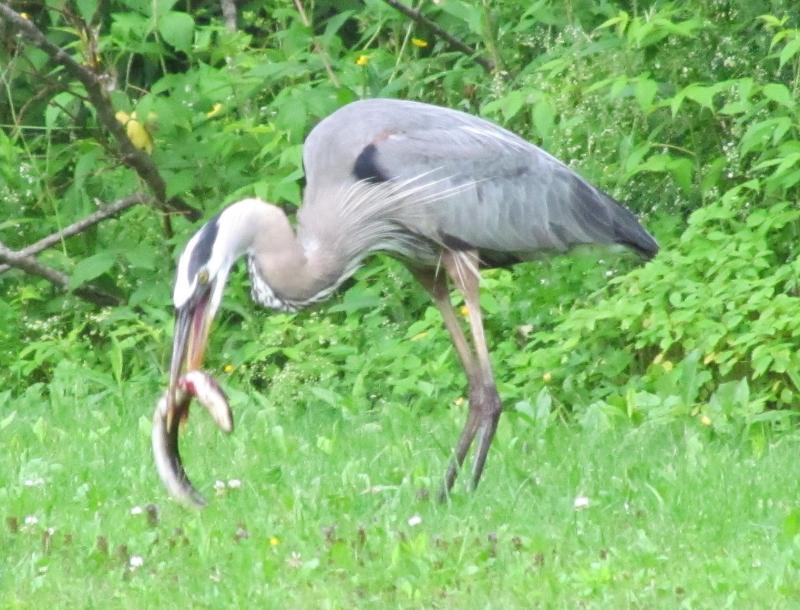Some people call them cranes. Others use the less delicate but well-remembered slang of “sh-tpoke” or some version of it (as an aside, “poke” is an old term for a bag, as in the old saying, “pig in a poke”). But the formal name given to them by ornithologist’s here in North America is great blue heron.
Herons are actually very different from cranes, although both are large, tall, long-legged birds. You may find it interesting to know that herons are actually more closely related to pelicans, while cranes closer relatives are the rails. The only crane we have here in Maine is the sandhill crane, and prior to about 20 years ago, any sighting of even these birds here in the state was a rarity. Today, there are perhaps 10-20 pairs of sandhill cranes nesting in Maine, mostly in southern Maine from the Belgrade region south.
Sandhill cranes differ from great blue herons in many ways. Most obvious is that their colors are different. Great blue herons have black and white on the head and a yellowish bill; sandhill cranes have a red cap, white cheeks, and a black bill. Their shape in flight is also different. Sandhill cranes fly with their necks extended straight out in front of them while great blue herons pull their head back into the body when they fly. There are a wide range of other differences, too. Sandhill cranes are typically birds of freshwater habitats and are also often seen foraging in agricultural fields. Great blue herons are found in marine coastal wetlands as well as freshwater habitats in marshes and along lakes and rivers — rarely in agricultural fields. Sandhill cranes nest on the ground, often on a mound of vegetation in a freshwater marsh. Great blue herons make a stick nest placed high up in trees, sometimes in colonies that can range from a handful of birds to dozens (larger colonies are often on wooded islands on the coast or in large lakes).
Great blue heron colonies on some of our coastal islands have apparently been suffering over the last 10-15 years as bald eagle populations have rebounded. Some clever eagles have discovered that a baby heron in a tall nest can make a nice meal, and once they’ve enjoyed one of these meals they are likely to return for another. In response, great blue herons nesting in some of the larger colonies have dispersed to other locations so that there may be more very small and less conspicuous nesting colonies scattered among many different sites.
The biologists with the Maine Department of Inland Fisheries and Wildlife have initiated a number of programs to engage the public and local school children in monitoring nesting colonies of great blue herons and, starting this past summer, in placing GPS transmitters on some Maine great blue herons to track their movements. One of these birds, tagged in the Newport area, has recently made its way to Haiti!
So, the next time you are tempted to call that big, tall bird you see along the coast a “crane,” stop for a moment, reconsider, and remind yourself it’s a great blue heron (or...sh-tpoke, just don’t say it around the kids!)































